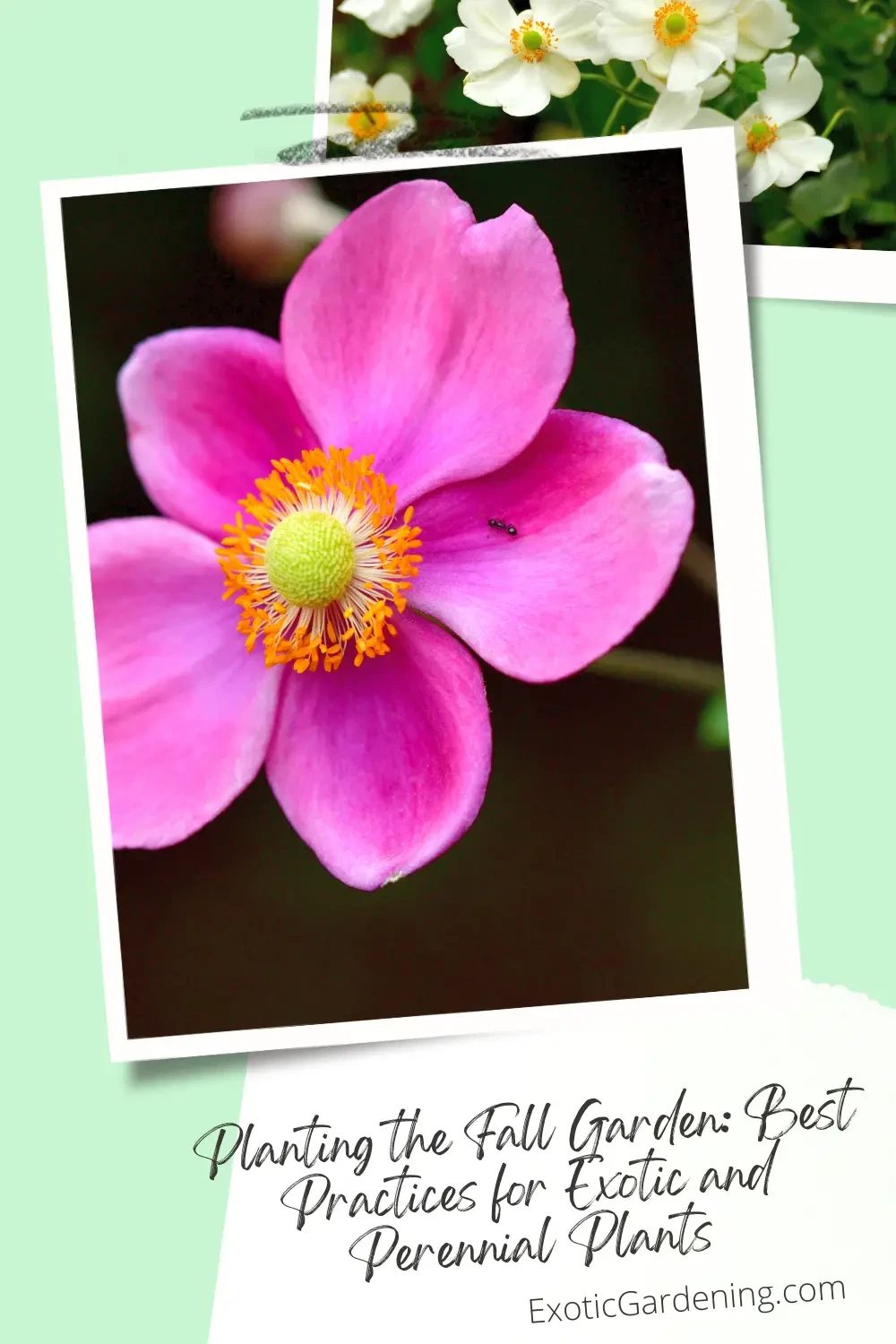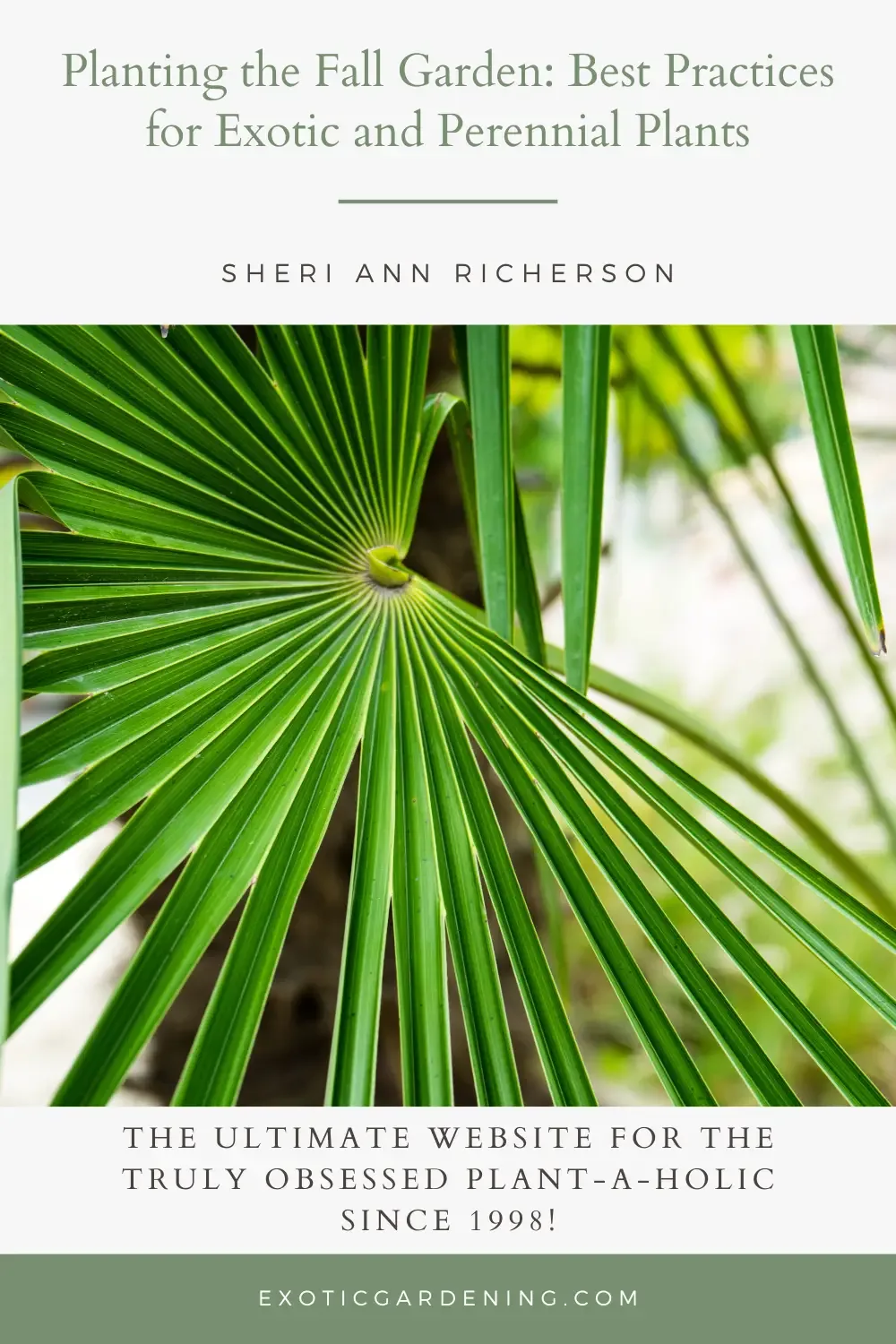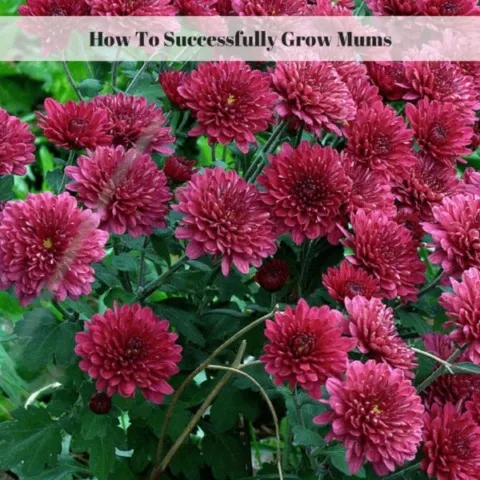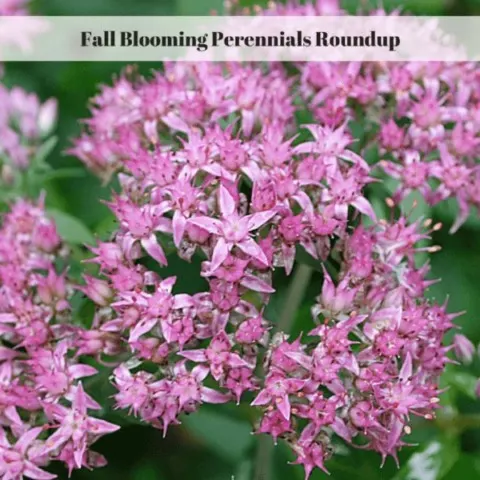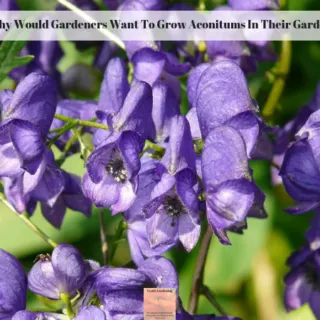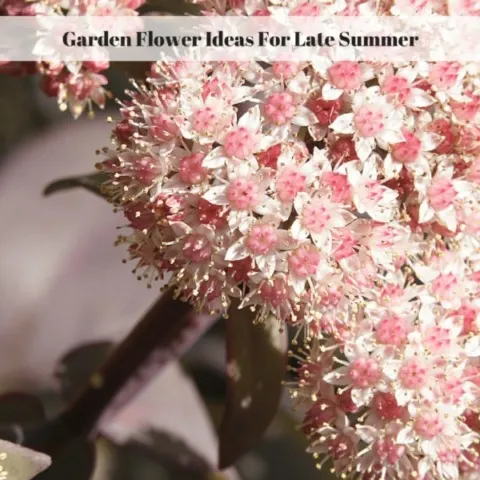Planting the fall garden is a passion of mine.
As the leaves start to paint the world with their fiery hues and the crisp autumn breeze dances through the garden, I can't help but get excited about what's in store for this fall.
It's a season filled with the promise of new beginnings, a time when nature herself is preparing for a well-deserved rest.
The fall garden holds its own kind of magic, a tapestry of colors and scents that's both soothing and invigorating.
It's a time for planning, planting, and nurturing the beauty that will grace your outdoor space not only through the fall but often well into the winter months.
In this guide, I'm excited to share the best practices for planting exotic and perennial plants in October.
So, as we delve into the world of fall gardening, let's explore the unique advantages of planting in October, the essential steps for soil preparation, the art of selecting exotic and perennial plants, and the careful techniques for planting them.
We'll also unravel the secrets of caring for your green treasures as the colder months set in, and we'll discover the pure joy that fall gardening brings.
Why Plant in October
October offers a unique canvas for gardeners.
With cooler temperatures and the promise of ample rainfall, it's a season filled with potential.
But let me tell you, I wasn't always an October planter.
Life gets busy, and those spring and summer months just slip through my fingers like grains of sand.
But you know what?
Planting in October has become my trusted friend, my garden-saving grace.
Last year, I planted a batch of perennial herbs in October, and I was skeptical about their survival.
But nature had a surprise in store.
The cooler weather and consistent rainfall provided the perfect conditions for these herbs to thrive.
The following spring, they emerged stronger and more vibrant than ever before.
So, this is where our journey begins.
Embracing the thrill of planting in October and savoring the incredible advantages it offers.
It's not just a last-minute decision; it's a carefully calculated move, a dance with nature, and an ode to the ever-renewing spirit of the garden.
Let's get our hands dirty, embrace the chill in the air, and uncover the secrets of planting in October.
Preparing the Soil
Preparing the soil is like laying the foundation for a successful fall garden.
For us gardeners, it's akin to creating a cozy haven for our green friends, one where they can thrive and flourish.
Exotic and perennial plants, in particular, have their own unique needs.
They're like the divas of the garden, and we're here to ensure their comfort.
You might be thinking, "Why fuss over soil? It's just dirt, right?"
But oh, it's so much more.
It's the very essence of your garden's health and vibrancy.
I've discovered that exotic and perennial plants, with their distinct preferences, are quite particular about their soil.
So, I like to pamper them a bit.
It starts with amending the soil, enriching it with organic matter like nutrient-rich compost.
I often think of this as a luxurious spa treatment for my plants.
They soak up the goodness and reward me with their lush growth and stunning blooms.
But it doesn't end there.
I pay attention to the pH level, ensuring it aligns with the particular needs of the plants I'm tending to.
Exotic beauties, especially in my climate, appreciate a well-draining home.
This careful consideration of their soil conditions is the first step in ensuring they feel right at home in your fall garden.
Selecting Exotic and Perennial Plants
Now, let's talk plants.
Choosing the right varieties is key.
For fall, there are some stunning options that can add a touch of enchantment to your garden.
I've had a soft spot for exotic varieties like Japanese anemones, Hellebores and unusual varieties of Chrysanthemums.
They thrive in the cool, crisp air of autumn and, let's be honest, they add that touch of mystique to your garden.
But there's more to consider – hardy perennials like echinacea and sedum are also great fall additions.
They've got a way of extending the garden's beauty well into the cold months.
It's like a surprise gift from your garden when everything else has faded.
Now, let's introduce a few more intriguing characters to this garden tale.
Musa basjoo, the hardy banana plant, brings a touch of the tropics to your fall garden.
In colder climates, a thick layer of mulch around its base can help it survive the winter.
Consider Saccharum arundinaceum, the hardy sugar cane, not just sweet in taste but visually delightful, especially when its feathery plumes dance in the autumn breeze.
In regions with harsh winters, a generous mulch blanket provides protection.
The Chinese windmill palm (Trachycarpus fortunei), a personal favorite, withstands chilly winters while lending a touch of the tropics to your fall garden.
Some insulation covering the plant to make sure the center remains dry all winter with mulch around its roots can be a lifesaver when winter's icy grip tightens.
Some people even wrap the stem of the palm tree with Christmas lights and let those shine thorough the cold frame over the winter months to add additional warmth.
For a dramatic flair, think about the colossal leaves of Gunnera manicata, also known as the giant rhubarb.
It creates a prehistoric, Jurassic Park-like atmosphere in your garden.
In areas where the cold bites deep, a mulch fortress around its base is a must.
Moisture-loving perennials like Ligularia dentata ‘Britt Marie Crawford’, thrive in the fall's damp conditions, adding a burst of color with their orange daisy-like blooms.
A protective layer of mulch keeps their roots cozy through winter.
Don't forget the architectural beauty of Acanthus spinosus, with its iconic spiky leaves and tall flower spikes.
In colder climates, a deep mulch blanket keeps it snug during winter's frosty nights.
And for a touch of bronze elegance, consider Rodgersia podophylla ‘Bronze Form’, a perennial with striking bronzy leaves and delicate, airy blooms.
Mulching can help it endure the harshest winter conditions.
These selections are like a cast of characters, each with its unique charm, ready to make your fall garden a tapestry of beauty and wonder.
Remember, in colder climates, a heavy layer of mulch becomes your plants' warm and cozy blanket, ensuring their survival through the winter chill.
What an exciting journey it is to select and nurture these exquisite plants in your autumn garden!
Planting Techniques
You might be thinking, "How on earth do I plant in October?"
Well, there's a method to the madness.
As a gardener who's learned through seasons of trial and triumph, I'm here to guide you through the step-by-step process, ensuring your plants have the best chance to establish themselves before winter's icy grasp takes hold.
Step 1: Choose the Right Spot
Before you dig a single shovelful of soil, carefully select the spot for your plants.
Consider the unique needs of each species.
For those on the edge of their hardiness zone, like Musa basjoo, it's crucial.
In colder climates, people tend to plant them a foot deeper than normal and mulch them with a four-foot pile of dry leaves, covering it with plastic.
Another option is using heat tape on the ground right above the plant and offering additional protection using a cold frame or a similar object.
This extra care can be the difference between life and death in freezing winters.
Step 2: Prepare the Soil
Once you've chosen the right spot, it's time to prepare the soil.
I can't stress enough how important this is.
Begin by enriching the soil with organic matter, such as compost.
This provides your plants with the nutrients they need to thrive in their new home.
For moisture-loving varieties like Ligularia spp., it's especially crucial to ensure the soil retains adequate water.
Make sure it has good drainage to avoid waterlogging, but keep it consistently moist to cater to the needs of these plants.
Step 3: Dig the Hole
Now, let's get digging.
The hole you dig should be just the right size – not too big, not too small.
A general rule of thumb is to make it twice the width of the root ball and just as deep making sure to loosen the soil at the bottom of the hole and mix in a little compost or fertilizer.
If you're planting something like Gunnera manicata with large leaves, ensure you've got enough space above ground for those majestic fronds.
Step 4: Remove the Plant
Gently remove your plant from its pot, being careful not to damage the roots.
If you're dealing with bare-root plants, here's a key step: give the roots a quick trim, removing any damaged or broken roots, and perhaps snip about an inch off the bottom.
This helps ensure that your plant is ready to establish itself in its new home.
Now, place the bare-root plants in a bucket with a solution of ½ strength fertilizer and allow them to soak for an hour or so.
This rehydration and nourishment step ensures that your bare-root plant is well-prepared to thrive in its new environment.
By following these specific steps for bare-root plants, you'll give your garden additions an even better chance to flourish in their new setting.
Step 5: Place and Backfill
Before you backfill the hole, here's an essential check: fill the hole with water and watch it drain.
It should completely drain within 10 minutes.
If it doesn't, this indicates that the area lacks good drainage.
In such cases, it's vital to amend the soil to improve drainage before proceeding with planting.
Once you've ensured proper drainage, place your plant in the hole, ensuring it's at the same depth as it was in its container or, for bare-root plants, the same depth it was growing in the ground.
This step is crucial for providing the right conditions for your plants to thrive.
Now backfill the hole with the soil you removed, gently pressing it down as you go to remove any air pockets.
This step provides a stable and welcoming environment for your plants.
By including this check for soil drainage, you'll be well-prepared to offer your plants the ideal conditions for growth and ensure their well-being in your garden.
Step 6: Water Thoroughly
Give your newly planted garden additions a good drink.
Hydration is crucial, even in cooler weather.
Water them well to help settle the soil and give your plants the moisture they need to establish their roots.
It is best to check them daily, especially if they are a moisture loving plant.
During those warm autumn days plants often need more water than during the cooler days.
Step 7: Mulch and Protect
Finally, add a protective three inch layer of mulch around your plants.
In colder climates, this mulch acts as a cozy blanket, keeping the soil temperature more stable and protecting the roots from harsh temperature fluctuations.
For those on the edge of their hardiness zone, consider additional protection methods like heat tape and cold frames.
These tried-and-true steps ensure your plants are well-prepared for the challenges of a fall planting.
Along the way, I've had some "a-ha" moments and learned that the little details can make all the difference.
By following these steps, you'll give your garden the best chance to thrive in the upcoming season.
Caring for Fall Plantings
Once your precious plants are in the ground, they become the heartbeats of your garden, and it's time to care for them like the treasures they truly are.
Fall and winter may bring frosty challenges, but fear not, with the right strategies, your garden can not only survive but thrive through the colder months.
I'll share tips on how to protect your green gems from the biting cold and unpredictable weather.
- Tip 1: Mulch for Warmth and Protection: One of the best allies for your fall garden is a reliable layer of mulch. Mulch acts as an insulating blanket, keeping the soil temperature more stable and protecting the roots from harsh temperature fluctuations. For perennial plants like echinacea and sedum, this mulch layer helps them keep their roots cozy and promotes healthy growth. However, as mentioned earlier, for those on the edge of their hardiness zone, such as Musa basjoo, a much thicker layer, often several feet deep, is necessary to provide the insulation they need.
- Tip 2: Watch for Frost and Cover Up: Keep a keen eye on the weather forecast, especially during the fall and winter nights. When frost is predicted, be ready to cover your more delicate plants with frost cloths or old blankets. These protective layers create a microclimate around your plants, shielding them from the damaging effects of frost.
- Tip 3: Watering and Hydration: Remember, plants still need hydration, even when it's cooler. The misconception that they require less water during fall can be detrimental. Be sure to water your fall garden as needed, and ensure the soil remains adequately moist. Well-hydrated plants are better equipped to withstand temperature fluctuations and the challenges of colder months.
- Tip 4: Pruning and Deadheading: Don't forget to do some light pruning and deadheading during the fall. Removing dead or damaged plant material not only keeps your garden looking tidy but also redirects the plant's energy towards healthy growth. For instance, trimming spent blooms on hardy perennials like echinacea can encourage fresh growth and prolong the beauty of your garden.
By implementing these strategies and giving your garden the care it deserves, you'll ensure your fall plantings not only survive but thrive, gracing your outdoor space with beauty and color even in the chilliest of seasons.
Caring for your garden during the fall and winter becomes a labor of love, and the rewards are worth every effort.
The Joy of Fall Gardening
Finally, we come to the heart of the matter.
The joy of fall gardening is truly something to savor.
It's a time when the garden becomes a place of peace and reflection.
The vibrant colors, the gentle rustle of leaves, and the satisfaction of nurturing your plants through the seasonal shift – it's a special kind of magic.
As our journey through planting the fall garden comes to a close, remember these key takeaways: soil preparation is essential, plant selection can be an adventure, planting techniques make all the difference, and caring for your garden in the colder months can be rewarding.
But most of all, relish the joy of fall gardening.
It's a unique and beautiful time to be a gardener.
If you have questions or want to share your own stories, don't hesitate to reach out.
We're all garden enthusiasts here.
The Fall Garden
Fall Pruning Secrets: Trimming for Healthier Plants
Discover Fall Pruning Secrets: Learn when and how to prune for healthier plants in our expert guide. Your garden will thank you!
Rainy Days and Your Garden: Managing Watering in the Fall
Discover the art of managing watering in the fall. Tips to prevent overwatering and keep your garden thriving on rainy days.
The Art of Mulching: Protecting Your Plants from Autumn Chill
Discover the secrets of expert mulching in fall. Learn how to protect your plants from the autumn chill with our essential mulching guide.
Crafting Miniature Gardens for Halloween - A Vintage Halloween Tale
Craft Vintage-Inspired Miniature Gardens for Halloween - Spooky Terrariums with Plants and Halloween Decor.
Halloween Horticulture: Plants with Magical Properties for Halloween
Unlock the enchanting world of Halloween with plants with magical properties. Discover their mystical allure in our captivating guide.
Growing Exotic Pumpkin Varieties for a Magical Fall Garden
Discover the allure of exotic pumpkin varieties in your garden for a magical fall. Spice up your harvest with diversity!
Creating a Spooky Halloween Garden: Unveiling Nature's Eerie Allies
Transform your garden into a spooky Halloween haven with eerie insects, enchanting decor, and the magic of nature. Explore now!
Monkshood Flowers for the Fall: A Majestic and Toxic Beauty
There are some late blooming flowers for the fall season such as monkshood. Autumn monkshood is known to bloom from September to November!
Sweet Autumn Clematis: A Garden Treasure
Discover the enchantment of Sweet Autumn Clematis: rapid growth, fragrant blooms, and versatile garden beauty await!
3 Quick Fall Garden Tasks To Do Now
Master your garden's fall cleanup with these 3 essential fall garden tasks. Save time and stress less this season!


